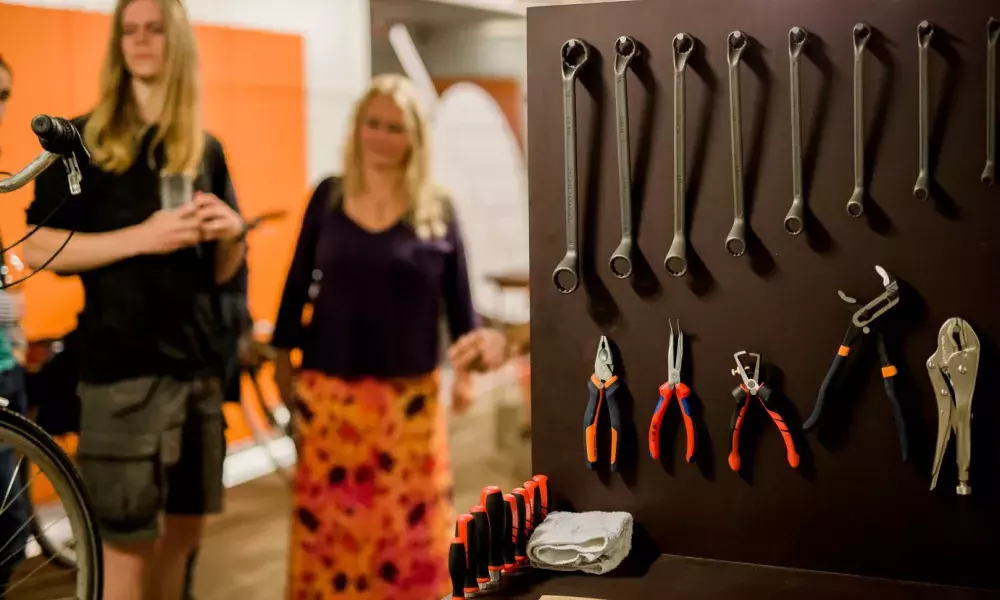UIA projects experimenting bold solutions for a Circular Economy – Part 2

As mentioned in the Call 5 announcement , the definition of the Circular Economy topic will be different than the one under which the below projects were funded. Nevertheless, it is definitely worth checking out how these UIA projects are progressing and what common challenges they face. Furthermore, thanks to the four UIA Experts Marcelline Bonneau, Jorgina Cuixart, Kinga Korniejenko and Christina Marouli, the first journal for each project is already out and we could draw some key cross-cutting lessons.
Located on the south end of the EU, the municipality of Heraklion is currently tackling the problem of avoidable and unavoidable food waste. The idea is to implement a holistic solution comprised of prevention, separation collection scheme, creation of a second opportunity food restaurant, bio-plastic production and composting. At this point, the project is finalising its first year of implementation and as Christina Marouli mentions: “a major challenge the project has to consider is the re-conceptualisation of food waste as a valuable resource and – even more challenging – as potentially good food for others (…) This requires systematic and very good communication both within the project team and in the public awareness raising campaign” – see “The A2U Food project Journal N° 1 ”. Therefore, citizen engagement is crucial to the proper implementation of the main actions.
On the opposite side of Europe, the city of Lappeenranta is reducing CO2 emissions while revolutionising the urban construction engineering. Kinga Korniejenko writes that “in this project the closed loop of materials and faster, safer, more versatile industrial scale production methods that minimize negative externalities of construction are experimented. Implementation of the other aim – developing revolutionary urban design – will be based on interaction of urban authorities, citizens, urban design experts, material R&D expertise and advanced additive manufacturing technology.” That is why she concludes that “the steps of consultation with the potential users are very important for the project, because the acceptance of society is key factor for the project implementation” – see “The Urban infra revolution project Journal N° 1 ”.
In the meantime, the city of Antwerp is also looking at creating circular behaviour within its residents while co-creating online and offline initiatives to adapt their consumption of electricity and water and to deal with waste in a circular way. Marcelline Bonneau reports that “the project will use technical devices (Photovoltaics - PVs, Building-integrated photovoltaics - BIPVs, storage batteries, smart plugs, smart sensors, smart meters, smart waste bins and A-card), combined with specific modalities (online community engagement, transition board, data treatment procedures, user profiling, business logic, nudges, block chain, recruitment of Repair buddies and makers), with online and offline interfaces (dashboard and a circular community centre) to carry out activities for the residents (creation of an energy cooperation, of a circular coin and smart contracts, waste challenges, leasing of tools and devices, repairs cafes, circular material workplace, redesign service, study visits).” Therefore she goes on, saying that “that the transition of consumers towards more sustainable consumption practices should be addressed in a combination of approaches and stakeholders” – see “Antwerp Circular South Journal N°1 ”.
In parallel, one thousand kilometres east, the city of Ljubljana is tackling a very specific type of waste. They aim at turning invasive alien plant species (IAPS) into a resource and a new business model. However, “… instead of doing it by themselves (as any other public works), it counts with the participation of citizens in both the identification and harvesting of IAPS“, Jorgina Cuixart reports. She continues by stating that “through educational and awareness raising campaign, citizens are encouraged to participate in IAPS harvesting and use. The main change is to shift from linear treatment of IAPS to a circular one that leads to the development of new valuable products and an effective and transferable response to IAPS management in urban environments“ – see “The APPLAUSE project Journal N° 1 ”.
From the presented projects, one thing is clear – in order to achieve real circular economy, urban authorities need to engage citizens and help them change their behavioural patterns. We have all heard the well-known saying that old habits die hard and probably that is why all four projects have included actions aimed at involving their target audience. Without active participation from citizens, it is highly unlikely that any innovation would achieve success under this topic. Therefore, citizen engagement towards behavioural change turns to be a corner stone for all actions aimed at sustainable development in a circular way. Applicants who would like to submit proposals under this topic for Call 5 could pay an extra attention to this cross-cutting challenge.
About this resource
The Urban Innovative Actions (UIA) is a European Union initiative that provided funding to urban areas across Europe to test new and unproven solutions to urban challenges. The initiative had a total ERDF budget of €372 million for 2014-2020.
Similar content




